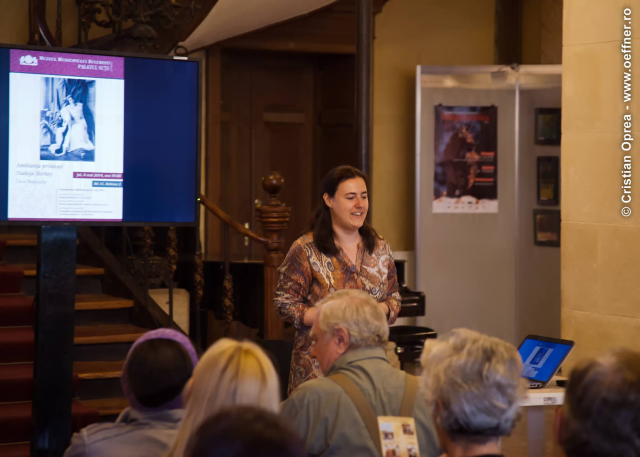Princess Nadeja Stirbey
While not in the spotlight, the life of Romanian grand bourgeoisie women in the first half of the 20th century is no less interesting, quite the contrary. At the heart of family life, they were often the driving engine of an active artistic environment an
Warning: Trying to access array offset on null in /home/web/rri.ro/public/wp-content/themes/rri/template-parts/content.php on line 53

Warning: Trying to access array offset on null in /home/web/rri.ro/public/wp-content/themes/rri/template-parts/content.php on line 98
Christine Leșcu,
24.05.2014, 18:25
While not in the spotlight, the life of Romanian grand bourgeoisie women in the first half of the 20th century is no less interesting, quite the contrary. At the heart of family life, they were often the driving engine of an active artistic environment and themselves creators of art. One such example is princess Nadeja Stirbey, whose husband and second removed cousin Barbu Stirbey was a politician and industrialist who served as prime minister, foreign minister, finance minister and interior minister at different times in his career. Barbu Stirbey was also a close advisor to King Ferdinand and Queen Marie. Nadeja was a descendent of two old ruling families, Bibescu and Stirbey. Her birth was the result of a stormy love affair. Her father, George Bibescu was the son of ruler Gheorghe Bibescu who stayed on in Paris after finishing his military studies at the Military School of Saint-Cyr.
Art historian Oana Marinache tells us more: “George Bibescu caused a scandal when he fell in love with a married woman, Valentine de Caraman-Chimay, who was married at the time to the Count of Bauffremont. Divorce was not an option in the high society of the day, but the two lovers did their best to stay together. The countess already had two daughters but had to leave France and settle somewhere in the Duchy of Saxony, near Dresden, where she could secure a divorce and marry Prince George. Nadeja was born in Loschwitz, near Dresden, on 16th August 1876.”
In the wake of her divorce, countess Caraman-Chimay had no choice other than renounce the two daughters resulting from her first marriage. Of the second marriage, when she was betrothed to Prince George Bibescu, three children were born: Marcela, who would become the mother of a famous inter-war architect, G.M. Cantacuzino, Nadeja and George Valentin, who was married to princess-writer Marta Bibescu, the founder of the Romanian Automobile and the Romanian aviation Club.
As for Nadeja, shortly after graduating the boarding school in Germany she got engaged. With details on that, here is art historian Oana Marinache again: ”The engagement, which was pre-arranged by the family, was celebrated in Switzerland. Prince Barbu Stirbey had lost both parents. The Prince was the owner of the famous Stirbey Palace located on Victory Road and of the Buftea estate, where she wanted to live a private life, which kept her far from the high-life of her time. At least during their four daughters’ first years of life, the two kept a rather low profile, devoting themselves to the family and their estate in Buftea. Towards 1905, their friendly ties with the royal family open up brand new perspectives for the whole family. The prince’s political ascension brought them to Bucharest”.
For the most part of her life, Nadeja would live on the Stirbey estate in Buftea, nearby Bucharest, and it is there that her passions would blossom. The princess could paint, embroider and knit. She also wrote poems and short stories, she kept a diary and was also very keen on photography. For most of her domestic activities, she got help from her four daughters — Maria, Eliza, Nadeja and Ecaterina and saw that they were offered a proper education. Lots of photographs were found in the family archive, which princess Nadeja herself took with a Kodak camera.
With details on that, here is Oana Marinache again: ”She was one of the most emancipated princesses of her time. We haven’t so far found any dark room or a studio where she developed her films, but there must have been one in Buftea. She was the main author of most of the family photos included in her albums. For that time and for the Romanian lifestyle, her passion for photography was something modern. “
Princess Nadeja Stirbey died in 1955 in Sinaia, after the communist regime had seized her wealth and her houses. Recently, fragments of her diary also seized by the communists and which can now be found in the National Archives have been published, so that the reading public can have a more accurate image of a world the communists wanted to erase from our history.






























